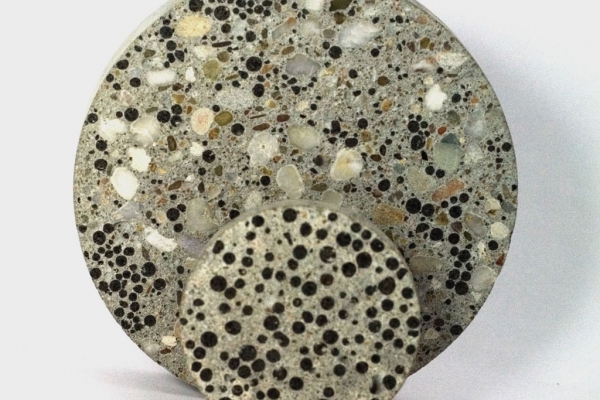Ref No: 1994

Abstract
Self-healing:Induction of calcium precipitation via bacteria action has been increasingly studied for self-healing concrete applications for many years. Some of these previous studies have presented promising conclusions that microbiologically-induced calcite-precipitation is perhaps a useful approach for remediation and rehabilitation of shallow cracks on the existing structures. While the other previous studies have shown this as necessary to encapsulate the ingredients (bacteria, nutrients and organic precursors) separately for self-healing concrete using microbiologically-induced calcite-precipitation. During mixing, there is a chance that capsules or other carries of the self-healing agents may release their cargo and affect concrete properties.
Based on the above facts, the objective of this research was to evaluate whether the concrete shallow cracks can be remediated by using bacteria-based repair system or not. This research also aims to develop a new bacteria agent to be used in remediation of concrete cracks, and to understand the effect of bacterial agents on the properties of cement-based mortar. The scope of this research is diverse; it requires an understanding of the factors that affect durability, water permeability, cement properties such as initial and final settling time, quality and quantity of the precipitated materials from the bacteria-based healing system.
This research is broadly divided into three main stages. In spite of a number of studies on mechanism and efficiency of the bacterial self-healing concrete, stage one is to investigate the effect of bacterial self-healing agents on the properties of fresh and hardened concrete. This information is critical for any further research and implementation of this novel material. As any additives, this may have a negative effect on final concrete properties. This will be viewed with skepticism and limit uptake.
This stage includes the effect of the self-healing agents individually and as a combined medium on the mechanical properties of fresh concrete, the hydration kinetics and early and final settling time, as well as strength and microstructure development over time. In addition, the effect of self-healing agents on hardened concrete is investigated to determine whether capsule rupture in response to a crack would have a detrimental effect or not on the concrete properties in the area surrounding the crack. Results showed that self-healing agents; sodium citrate, greatly influenced hydration kinetics when concentration exceeded 0.05% of cement mass. Although the self-healing agents at 0.5% by binder mass slightly retards settling, they have little negative effect on either 3 or 28 days strength. Calcium acetate, the dominant self-healing agent, acts as an accelerator while other components of the medium can have detrimental effects on fresh and hardened concrete properties. Provided the quantity of self-healing agents released is below a certain threshold, it is unlikely that any detrimental effects will limit application of bacterial self-healing concrete.
Stage two included applying the main components of self-healing agents (calcium lactate and yeast extract) with the ingredients of mortar mix and as a combined medium with mortar mix (two-stage bio-concrete/mortar) to investigate the ability of B.cohnii, B.halodurans and B.pseudofirmus to induce calcite-precipitation through the cracks. Results showed that the healing materials by each one of the three bacteria with the main components of self-healing agents were very weak and were not distributed along the crack. Moreover, the deficiency of main components of self-healing agents to sealing cracks, which provided in bio-cement mortar 5% of a combined medium by binder mass distributed in whole samples results showed the samples dissolved in water, which means the more ingredient of SHA-1 is added to bio-mortar the more retarded to the cement happen and less strength is reached.
The remediating cracks of hardening concrete by using three different types of bacteria (B.cohnii, B.halodurans and B.pseudofirmus) is presented in stage three. The factors which affect the quantity and quality of healed materials such as starting and finishing healing time, the growth of each bacterium, and viability of each bacterium in alkaline environment are also experimentally studied. The results showed that the three bacteria which we studied are capable to produce calcium carbonate in self-healing process and the B.pseudofirmus is most suitable, efficient and economical for remediating concrete cracks.
SUMMARY, CONCLUSIONS AND RECOMMENDED FURTHER WORKS
INTRODUCTION
Several issues are addressed and raised in this research, which includes sealing and healing of hardening cracked concrete using three different types of bacteria and provides insight towards understanding the effect of adding bacteria with or without their agent to concrete properties performance.
The summary of overall study including the results of literature review and experimental results analysis are presented in this chapter. Also this chapter brings together the conclusions drawn from research work reported in this dissertation and given in the previous chapters, and recommends appropriate further future work for continued development of the delivery systems in concrete using bacterial healing techniques. For more specific conclusions for each segment of this study, the reader is referred to the end of each chapter……


Recent Comments